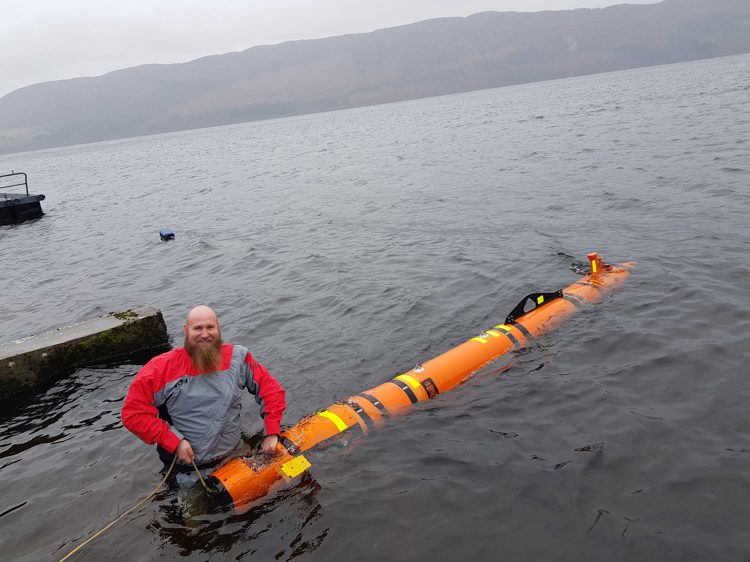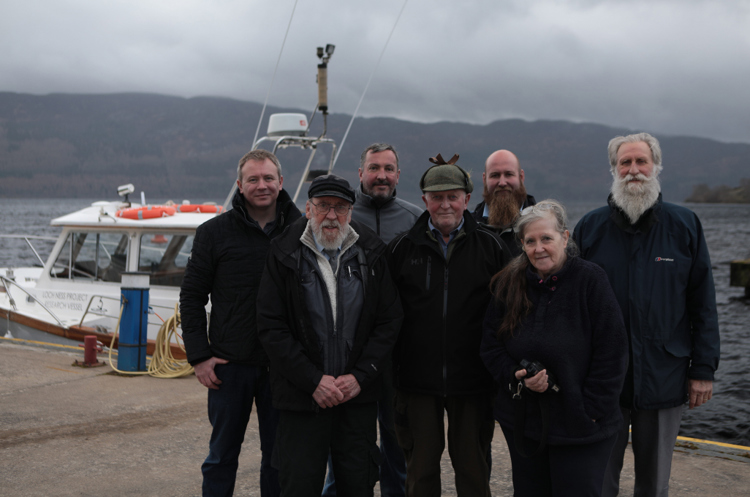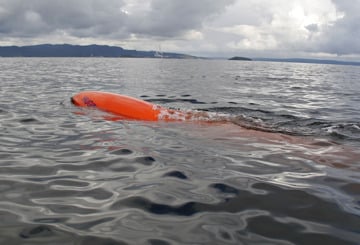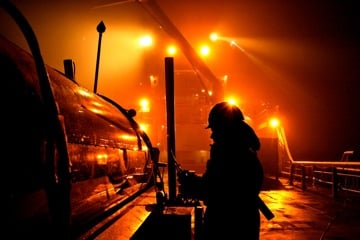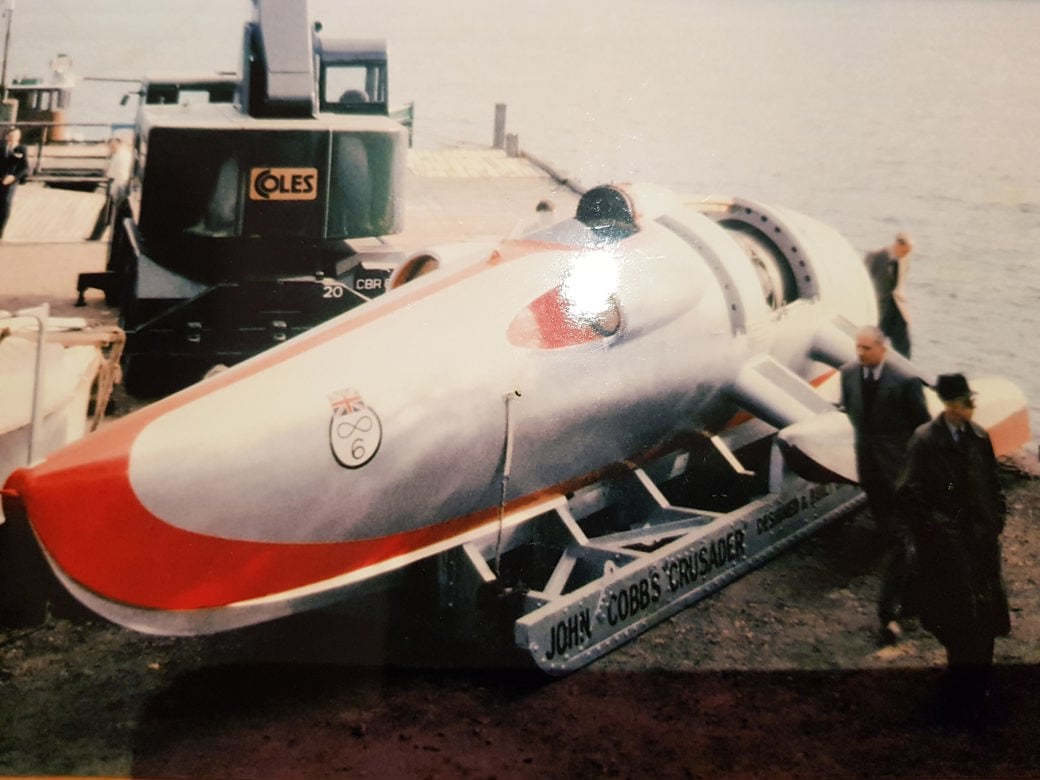
New Loch Ness Survey for National Geographic Series, Drain the Oceans, Finds the Historic Wreck of 'Crusader,' the Jet-boat designed to break the World Water Speed Record in 1952
Using the latest Kongsberg Maritime technology, the exact location of the historic wreck Crusader has been discovered: a feat which would not have been possible before now. In collaboration with Kongsberg Maritime, new underwater surveys of Loch Ness have been undertaken for the ongoing National Geographic series, Drain The Oceans.
Mallinson Sadler Productions, in collaboration with Kongsberg Maritime and the Loch Ness Project, have undertaken new underwater surveys of Loch Ness for their ongoing National Geographic series, Drain the Oceans. Using the very latest robotic technology the team scanned the Loch depths to map areas with higher resolution and accuracy than ever before. During an underwater scan the team uncovered the location of the historic wreck of, 'The Crusader', used to attempt the World Water Speed Record in 1952.
What Happened to Crusader?
In 1952, John Cobb, holder of the land speed record at over 390 mph, brought his jet-powered boat, Crusader, to Loch Ness in an attempt on the water speed record, which then stood at 178.4 mph.
The length of the Loch seemed ideal for a record attempt but the narrow breadth can exaggerate any bad weather. Cobb needed very light winds and calm water. After six weeks of trials, on 29th September 1952, he accelerated across the Loch to complete a measured mile, when, to the horror of onlookers and the world's press, Crusader appeared to hit a wake and crashed at a speed in excess of 200 miles per hour.
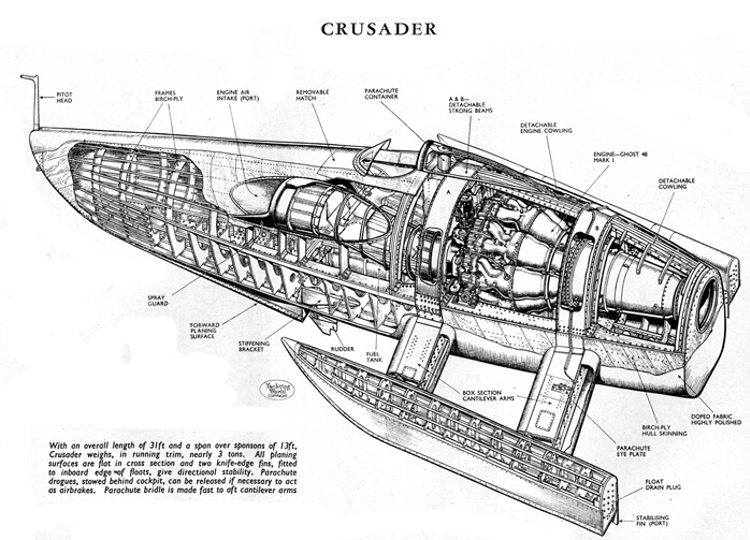
The boat disintegrated, killing John Cobb, whose body was recovered at the surface. Small fragments of Crusader were recovered but the rest of the vessel, including the jet engine, sank to the bed of Loch Ness.
It took another fifty years for further enquiries to be made. In 2002, a potential debris field was detected by sonar and inspected visually by a Remotely Operated Vehicle (ROV). Fragments of aluminium were found but the jet engine and the wreck site itself eluded the search.
In Drain the Oceans, Craig Wallace, Subsea Engineer from Kongsberg Maritime with Adrian Shine of the Loch Ness Project and their respective teams set out to discover the wreck. They used one of the world's most sophisticated Autonomous Underwater Vehicles. Its multibeam sonar offers a high resolution 3D image, allowing them to discover 'Crusader's' location, which was previously not possible. Using the AUV's positioning system, a remotely operated vehicle (ROV) was then deployed from the Loch Ness Centre's research vessel, 'Deepscan' and video footage obtained. The survey showed that the aft section of the wreck is remarkably intact and includes the jet engine and one of the sponsons extending out from the boat that provided stability.
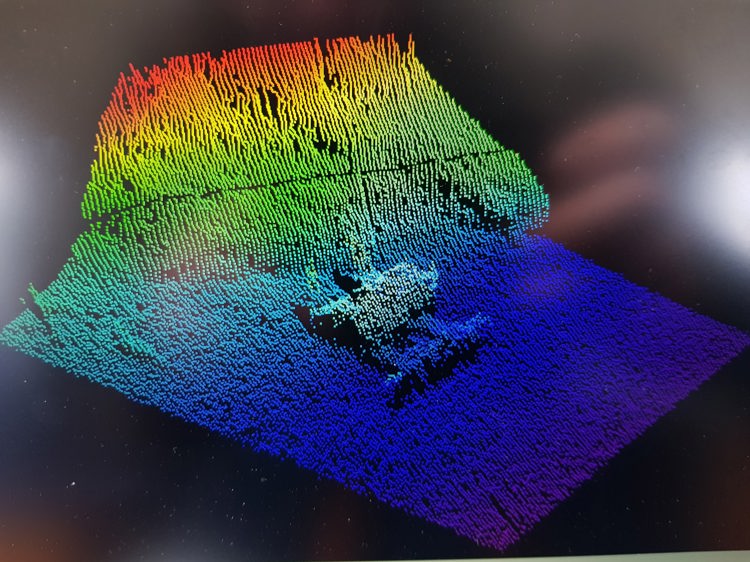
There is still controversy over the source of the long-lasting wake. As Adrian Shine says, 'wakes can travel for miles in calm water when they are not broken up.' A long held belief is that the wake possibly came from one of John Cobb's own support vessels.
